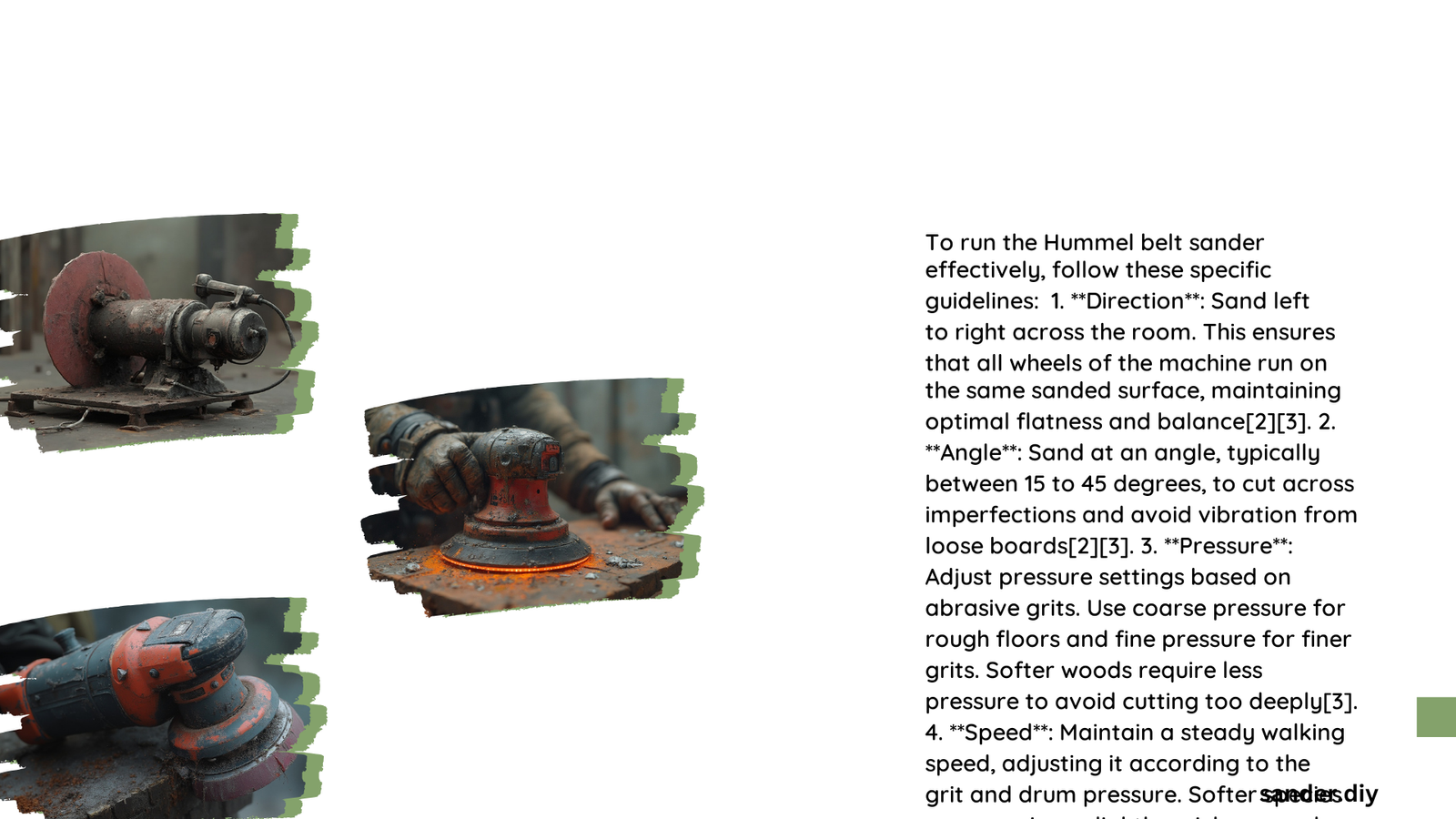Wood floor sanding requires precision and expertise, especially when using a specialized machine like the Hummel belt sander. Professional floor refinishers know that the correct run direction, machine orientation, and technique can dramatically impact the quality of the final surface. Understanding the nuanced approach to operating this powerful sanding tool is crucial for achieving a smooth, level, and professionally finished wood floor.
What Is the Correct Directional Approach for Hummel Belt Sander?
The Hummel belt sander demands a specific operational strategy that ensures optimal performance and surface quality. Professional sanders follow a precise left-to-right sanding technique that maintains machine balance and achieves exceptional flatness.
Key Directional Principles
| Aspect | Recommended Approach |
|---|---|
| Primary Direction | Left to right across the room |
| Wheel Positioning | Right wheel on freshly sanded surface |
| Sanding Angle | 15-45 degrees relative to floor boards |
Why Left-to-Right Matters
- Machine Balance: Ensures all eight-inch sanding drum wheels remain level
- Surface Consistency: Prevents uneven sanding patterns
- Wheel Tracking: Maintains precise contact with the floor surface
How Should You Position the Hummel Sander?

Proper positioning is critical for achieving professional results:
- Orientation Fundamentals
- Position sanding drum on the right side
- Ensure left wheel can run on sanded or unsanded surface
-
Right wheel must always track on freshly sanded area
-
Angle Considerations
- For standard wood floors: 15-30 degree angle
- For complex patterns (herringbone/chevron): 45-degree cross-grain approach
- Adjust based on board condition and wood species
What Are the Critical Operational Techniques?
Speed and Pressure Management
- Soft Woods: Slower speed, lighter pressure
- Hard Woods: Moderate to higher pressure
- Grit Progression: Adjust walking speed with abrasive grit changes
Advanced Sanding Strategies
- Criss-cross room by alternating corner start points
- Maintain consistent walking pace
- Monitor wheel tracking and surface evenness
Technical Considerations for Belt Installation
V-Belt Tension Guidelines
- Proper Tension: 1/4 inch deflection when pressed
- Alignment Check: Ensure pulleys are precisely aligned
- Tension Indicators:
- Too loose: Potential slippage
- Too tight: Excessive component stress
Practical Recommendations
- Always wear appropriate safety gear
- Inspect machine before each use
- Clean and maintain sander regularly
- Practice on sample surfaces to develop technique
Pro Tips
- Start with coarser grits for damaged surfaces
- Progress gradually to finer grits
- Use consistent, controlled movements
Troubleshooting Common Challenges
- Uneven Sanding: Adjust angle and walking speed
- Wheel Tracking Issues: Check belt tension and alignment
- Surface Imperfections: Modify pressure and direction
References:
– Lägler North America – Sanding Techniques
– Professional Floor Sanding Guide
– Hummel Sander Technical Manual
